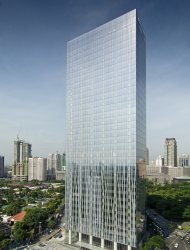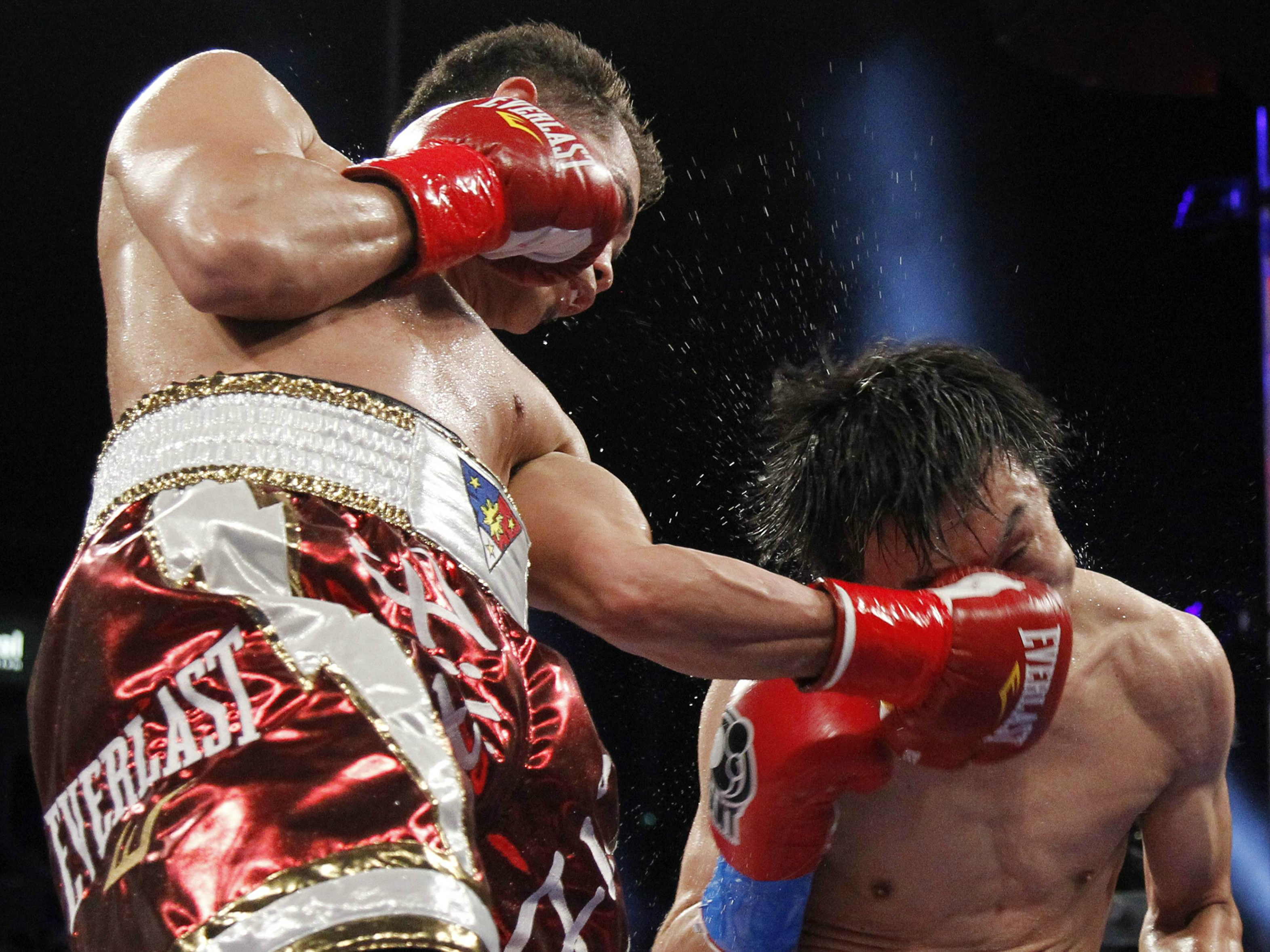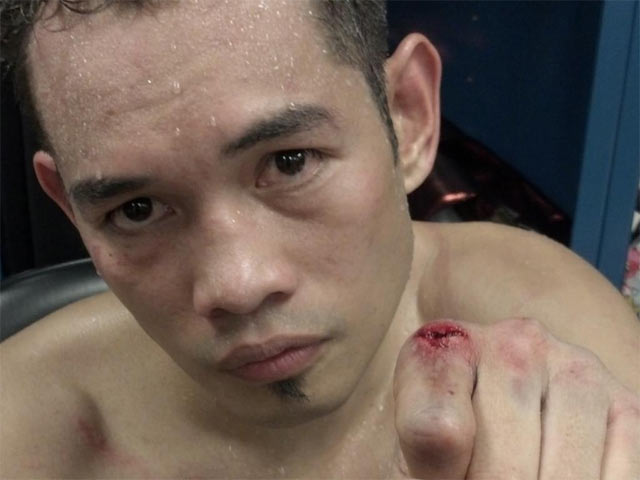| Historic visit by French
leader to spur investments By Aurea Calica The Philippine Star October 20, 2012 |

French Prime Minister Jean-Marc Ayrault and his wife Brigitte are
welcomed by President Aquino to Malacañang yesterday. WILLY
PEREZ |
MANILA, Philippines - The Philippines is grateful for renewed French interest
in the country as Prime Minister Jean-Marc Ayrault embarks on an official visit
here, a first since the establishment of diplomatic relations between the two
countries in 1947.
President Aquino yesterday welcomed Ayrault and his delegation to the Palace, where a bilateral meeting was held. Malacañang also hosted a dinner in honor of the French leader.
The Department of Foreign Affairs (DFA) said Ayrault, who assumed his position last May, was accompanied by a 130-member delegation comprised of ministers, parliamentarians and businessmen.
Deputy presidential spokesperson Abigail Valte said the visit of Ayrault was significant since bilateral trade with France increased in 2011 to $1.143 billion. “French investments are up by 90 percent in 2011,” Valte said in a press briefing.
She said French companies like Lafarge, Total and Alcatel also have a strong presence in the country. ]Other French companies have also signified their intent to participate in the bidding for several public-private partnership (PPP) projects.
The two leaders signed a Declaration of Intent in relation to a study for energy production from biomass.
The French government agreed to provide $482,204 to fund the feasibility study on rice straw as fuel to generate electricity using organic ranking cycle (ORC) technology.
Once the pilot project is developed, similar power stations could be installed in rural areas in the Philippines and exported to rice-producing countries in the Association of Southeast Asian Nations (ASEAN). Aquino and Ayrault also signed the Philippines-France Memorandum of Agreement on the Philippine Exhibition at the Musee Du Quai Branly.
“It confirms the conditions of the loan security conservation and return to the Philippines and immunity from seizure of the objects and artworks loaned for the exhibition and it will ensure mutual assistance in administrative matters of the following participating institutions: The National Museum of the Philippines and the Museum of the Bangko Sentral ng Pilipinas,” Valte said.
The Philippines was chosen to be the featured country in a grand exhibition at the museum in Paris from April to July of 2013.
It will be a landmark exhibition that will showcase 300-plus artifacts on pre-colonial Philippines.
The agreement aims to ensure the safety of the national treasures and other artifacts from the Philippines while in transit and on exhibition.
The French Prime Minister invited Aquino to open the exhibit of Philippine
artifacts in France next year.
Ayrault said he and Aquino discussed a number of issues including China, security, sea traffic and other areas where the two countries could cooperate to strengthen economic and historical links.
Aquino, who thanked Ayrault and his business delegation for visiting the country, said the French side had been assisting the Philippines on projects to address climate change

and on urban development.
Ayrault said he would like to pay tribute to the Filipino people and also the President for overcoming personal ordeals for freedom, democracy and justice.
The French leader cited Aquino’s role in ASEAN and the kind of leader he had become, being the son of two democracy icons.
Ayrault said Aquino never gave in and never gave up in his fight for democracy, justice and human rights, and had always been committed to peaceful settlement of disputes both on local and international fronts.
Ayrault said several French companies came with him, as well the minister for foreign trade and a delegation of French leaders for the business forum today where possible investments could be explored.
President Aquino yesterday welcomed Ayrault and his delegation to the Palace, where a bilateral meeting was held. Malacañang also hosted a dinner in honor of the French leader.
The Department of Foreign Affairs (DFA) said Ayrault, who assumed his position last May, was accompanied by a 130-member delegation comprised of ministers, parliamentarians and businessmen.
Deputy presidential spokesperson Abigail Valte said the visit of Ayrault was significant since bilateral trade with France increased in 2011 to $1.143 billion. “French investments are up by 90 percent in 2011,” Valte said in a press briefing.
She said French companies like Lafarge, Total and Alcatel also have a strong presence in the country. ]Other French companies have also signified their intent to participate in the bidding for several public-private partnership (PPP) projects.
The two leaders signed a Declaration of Intent in relation to a study for energy production from biomass.
The French government agreed to provide $482,204 to fund the feasibility study on rice straw as fuel to generate electricity using organic ranking cycle (ORC) technology.
Once the pilot project is developed, similar power stations could be installed in rural areas in the Philippines and exported to rice-producing countries in the Association of Southeast Asian Nations (ASEAN). Aquino and Ayrault also signed the Philippines-France Memorandum of Agreement on the Philippine Exhibition at the Musee Du Quai Branly.
“It confirms the conditions of the loan security conservation and return to the Philippines and immunity from seizure of the objects and artworks loaned for the exhibition and it will ensure mutual assistance in administrative matters of the following participating institutions: The National Museum of the Philippines and the Museum of the Bangko Sentral ng Pilipinas,” Valte said.
The Philippines was chosen to be the featured country in a grand exhibition at the museum in Paris from April to July of 2013.
It will be a landmark exhibition that will showcase 300-plus artifacts on pre-colonial Philippines.
The agreement aims to ensure the safety of the national treasures and other artifacts from the Philippines while in transit and on exhibition.
Ayrault said he and Aquino discussed a number of issues including China, security, sea traffic and other areas where the two countries could cooperate to strengthen economic and historical links.
Aquino, who thanked Ayrault and his business delegation for visiting the country, said the French side had been assisting the Philippines on projects to address climate change
and on urban development.
Ayrault said he would like to pay tribute to the Filipino people and also the President for overcoming personal ordeals for freedom, democracy and justice.
The French leader cited Aquino’s role in ASEAN and the kind of leader he had become, being the son of two democracy icons.
Ayrault said Aquino never gave in and never gave up in his fight for democracy, justice and human rights, and had always been committed to peaceful settlement of disputes both on local and international fronts.
Ayrault said several French companies came with him, as well the minister for foreign trade and a delegation of French leaders for the business forum today where possible investments could be explored.
















